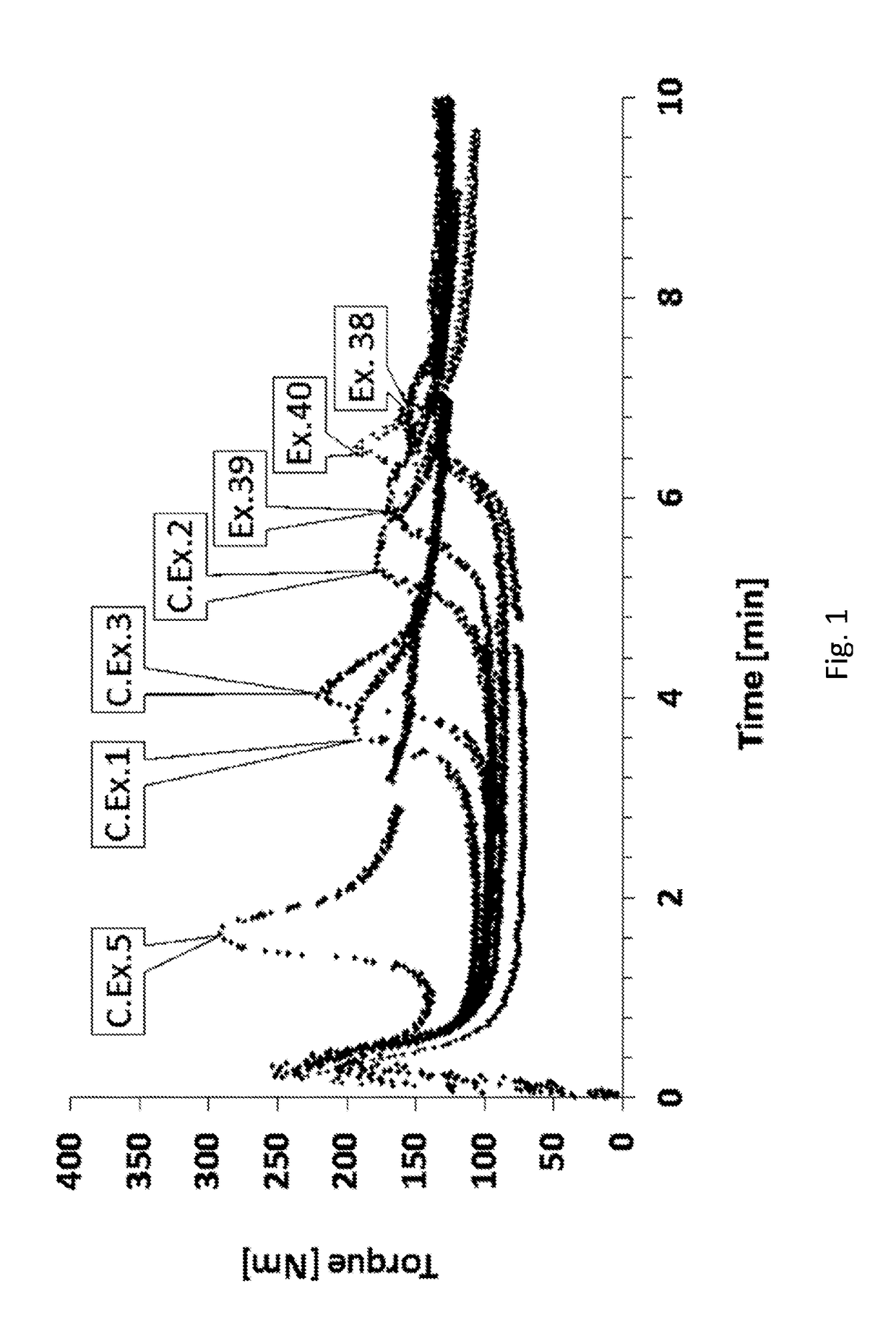Use of a Sulphur or Phosphorous-Containing Polymer as a Processing Aid in a Polyvinyl Chloride Polymer Composition
a polyvinyl chloride and polymer composition technology, applied in the field of polyvinyl chloride and polyvinyl chloride processing, can solve the problems of requiring additional energy, affecting the quality of polymer compositions, and requiring high energy consumption, so as to prevent the effect of “blocking” of dry powder
- Summary
- Abstract
- Description
- Claims
- Application Information
AI Technical Summary
Benefits of technology
Problems solved by technology
Method used
Image
Examples
Embodiment Construction
[0138]The following material have been used without any purification
TABLE 1materialsMwPurityProductName[g / mol][%]CAS NoAMPS2-acrylamido-2-methylpropane sulfonic229.23505165-97-9acid sodium saltBAButyl acrylate128.17≥99141-32-2EAEthyl acrylate100.12≥99104-88-5H2O2Hydrogen peroxide34.00357722-84-1MMAMethyl methacrylate100.12≥9980-62-6NaMPSA2-Methyl-2-propene-1-sulfonic158.1≥981561-92-8acid sodiumNaPSSodium persulfate238.10≥987775-27-1NDMN-dodecyl mercaptan202.40≥98112-55-0SBSodium Bicarbonate84.00≥99144-55-8SCSodium citrate214.10≥9918996-35-5SDBSSodium Dodecyl Benzene Sulfonate348.50≥9925155-30-0SDHSSodium dihexyl sulfosuccinate388.45~802373-38-8SDSSodium dodecyl sulfate288.40≥98151-21-3SVSSodium vinyl sulfonate130.10253039-83-6tBHPtert-Butyl hydroperoxide90.123575-91-2VAcVinyl Acetate86.10≥99108-05-4VCMVinyl Chloride62.50≥9975-01-4
[0139]The synthesis of various examples of processing aids in accordance with the present invention will now be described.
[0140]Processing Aid A
[0141]390 k...
PUM
| Property | Measurement | Unit |
|---|---|---|
| wt % | aaaaa | aaaaa |
| particle size | aaaaa | aaaaa |
| particle size | aaaaa | aaaaa |
Abstract
Description
Claims
Application Information
 Login to View More
Login to View More - R&D
- Intellectual Property
- Life Sciences
- Materials
- Tech Scout
- Unparalleled Data Quality
- Higher Quality Content
- 60% Fewer Hallucinations
Browse by: Latest US Patents, China's latest patents, Technical Efficacy Thesaurus, Application Domain, Technology Topic, Popular Technical Reports.
© 2025 PatSnap. All rights reserved.Legal|Privacy policy|Modern Slavery Act Transparency Statement|Sitemap|About US| Contact US: help@patsnap.com



